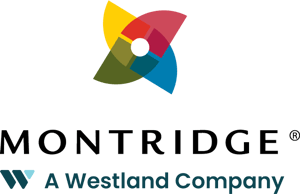OK, I’ll admit that a blog on the funding methods of benefit plans isn’t the sexiest. (If I end up helping the 33-50% of adults with insomnia issues, then I’ll take that as a small win). All kidding aside, it’s an important topic. Even small employers may have a plan design that uses a mix of these funding methods, so understanding them is critical.
This blog covers four ways employers typically fund their benefits plans, their respective pros and cons, and in which situations they are more commonly found.
Four Funding Arrangements for Benefits Plans
#1: Fully Pooled Insurance
The first model is called fully pooled insurance. Benefits that use this model often have lower premiums than the actual claim amount—think Life, Accidental Death and Dismemberment, Critical Illness, and Long-term Disability. There are also many Health and Dental plans that are fully pooled. A good example would be having a benefits plan through an association or Chamber of Commerce. .
Let’s say your Life Insurance benefit is $25,000, and your monthly premium is $2.50. This premium would need to be paid for 833 years before the insurer would be “reimbursed” for the cost of a single claim. That’s not going to happen. In this model, your monthly premiums are paid into an insurer’s pool, where hundreds or thousands of other companies also hang out. An underwriter looks at the employers and people in the pool and calculates the risk to the group collectively. Having a claim for these benefits doesn’t directly impact your renewal rates.
Benefits are pooled when doing so makes financial sense. Life insurance, long-term disability and similar benefits are pooled because the high cost of even a single claim allocated to one employer would render future premiums too high to afford.
#2: Experience-rated Insurance

The second funding model is experience-rated insurance. This method is standard for health and dental programs and short-term disability policies above a certain size. Here, experience is a fancy word for usage. In this model, premiums paid vs. claims paid will either partially or fully determine what your rates will do. Your Employee Assistance Plan also uses a version of experience rating because it looks at the utilization rate to calculate your renewal.
Within an experience-rated insured plan, there are also things you cannot control that will affect your renewal. Healthcare-related inflationary costs, legislative changes, and utilization across the country (not just for your employee group) make up an insurer’s “trend factor”. If your trend factor is 10%, it means the insurer is estimating that the basket of goods insured under your policy today will be around 10% more expensive a year from now. Has your chiropractor or optometrist raised their prices for 2022? Have new drugs come to the market, and there’s no generic version yet? All of these factors also go into calculating your upcoming renewal on an experience-rated plan.
#3: Administration Services Only
Administration Services Only, or ASO plans, are an uninsured arrangement between the employer and the insurer. It doesn’t look any different from an insured plan from the employee's perspective. A plan member or their dependent submits a claim to the insurance company. It’s adjudicated and paid according to the policy.
The difference is that the insurer isn’t financially responsible for the claims. The policyholder (employer) assumes all the liability for the financial result of the plan. They may pay deposits each month to make cash flow more manageable, or they may simply get an invoice from the insurer at regular intervals for the paid claims.
If your plan includes a Health Spending Account or Lifestyle account, you already know how an ASO plan works. You don’t pay anything if nobody uses it. You are charged for the claim cost plus an administration fee if they do.
Dental and Vision programs are some of the first benefits employers consider funding with an ASO method. These claims are typically predictable, which is what you should be looking for before considering this funding model. To protect the employer, ASO extended health plans often include some insured and pooled components for out-of-country and large prescription drug claims. 
#4: Retention Accounting
Refund or Retention Accounting isn’t that common, but it’s a hybrid between an experience-rated and ASO plan. Premiums are paid like an insured experience-rated plan, but reconciliation is done at renewal to see whether there was a surplus or deficit. The insurer commonly holds a reserve to get reimbursed for deficit years or recover the debt from future surpluses. If there is an excess, the employer can have the money back. And unlike an ASO arrangement, the client can terminate the policy without repaying the deficit balance. Insurance underwriters typically want clients to meet specific qualifications before considering a refund arrangement with them.
Final Thoughts
How you pay for your benefits plan impacts your premiums. It might seem tricky. It might seem complicated. It might seem boring (though I did warn you). Don’t worry. You don’t have to understand every aspect of how to pay for your benefits. A skilled advisor will help you ascertain the proper funding methods for your plan.








